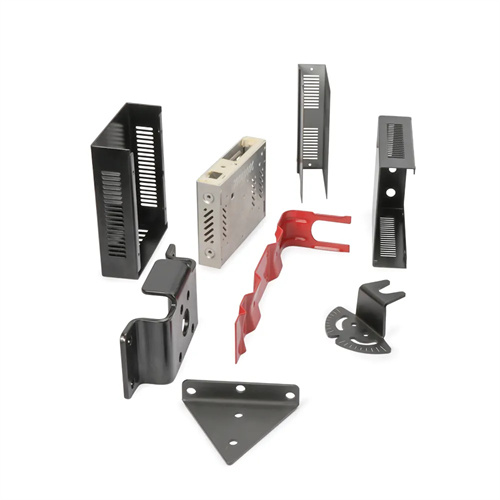Principles for calculating the cutting edge size of punching convex and concave dies
The principles for calculating the cutting edge dimensions of punch and die are design guidelines developed through long-term production practice. Their core purpose is to ensure dimensional accuracy of blanked parts, extend die life, and simplify the calculation process. These principles, based on die wear patterns, dimensional transfer relationships, and process economics, provide a unified calculation standard for different blanking processes and serve as an important theoretical basis for blanking die design. Whether blanking simple round parts or complex special-shaped parts, these basic principles must be followed, with flexible adjustments tailored to specific circumstances.

The “reference part principle” is the primary principle for calculating cutting edge dimensions. This means that the die is used as the reference for blanking, and the punch is used as the reference for punching. This is because the overall dimensions of the blanked part are determined by the die cutting edge. As the die wears, its dimensions slightly increase. Using the die as the reference ensures that the maximum dimension of the blanked part does not exceed the upper deviation of the part. In punching, the hole size is determined by the punch cutting edge. As the punch wears, its dimensions slightly decrease. Using the punch as the reference ensures that the minimum dimension of the punched hole does not fall below the lower deviation of the part. For example, in blanking, the die size is the maximum limit dimension of the part, while the punch size is determined by subtracting the clearance from the die size. In punching, the punch size is the minimum limit dimension of the part, while the die size is determined by adding the clearance from the punch size. This principle fundamentally addresses the impact of die wear on part dimensions, ensuring that the die can produce qualified parts throughout its lifecycle.

The “Wear Direction Principle” requires that when calculating cutting edge dimensions, the direction of mold edge wear be fully considered, with tolerances set only for directions where wear will affect part dimensions. For blanking dies, edge wear tends to increase dimensions. Therefore, the die’s base dimension is the part’s maximum limit dimension, with tolerances specified in the positive direction. For portions that do not change in size due to wear (such as concave contours), the average dimension of the part is used for calculation, with tolerances set at half the part’s tolerance. For punching punches, edge wear tends to decrease dimensions. Therefore, the die’s base dimension is the part’s minimum limit dimension, with tolerances specified in the negative direction. For portions that do not change in size due to wear (such as convex contours), the average dimension is also used for calculation. This principle reduces unnecessary precision requirements, easing mold manufacturing complexity while ensuring the accuracy of critical dimensions.

The “tolerance allocation principle” stipulates that the manufacturing tolerance of the mold cutting edge should be smaller than the part tolerance, generally 1/3-1/5 of the part tolerance. This is because mold manufacturing errors, assembly errors, and wear during use can all affect part dimensions. If the mold tolerance is too large, even in brand new condition, substandard parts may be produced. For example, when the part tolerance is 0.1mm, the manufacturing tolerance of the mold cutting edge should be controlled within 0.02-0.03mm; when the part tolerance is 0.3mm, the mold tolerance can be 0.05-0.1mm. For high-precision parts (tolerance ≤ 0.05mm), the mold tolerance needs to be even smaller, and even a matching method may be used. This involves first machining a reference part (die or punch), then matching it with another part to the actual dimensions of the reference part to ensure uniform clearances and meet dimensional accuracy requirements.

The “clearance principle” requires that when calculating cutting edge dimensions, the blanking clearance between the punch and die must be within a reasonable range, and the clearance value should be compatible with the material thickness and properties. Minimum and maximum clearances must be considered separately during the calculation. For blanking operations, when the die is calculated at its maximum limit, the punch is calculated as its minimum die size minus the maximum clearance; when the die is calculated at its minimum limit, the punch is calculated as its maximum die size minus the minimum clearance. For punching operations, when the punch is calculated at its minimum limit, the die is calculated as its maximum die size plus the maximum clearance; when the punch is calculated at its maximum limit, the die is calculated as its minimum die size plus the minimum clearance. This principle ensures that a reasonable blanking clearance is maintained between the punch and die within the mold manufacturing tolerances, avoiding problems such as excessive clearance leading to increased burrs or excessive clearance leading to increased cutting edge wear.

The “economy principle” emphasizes simplifying the calculation and manufacturing process as much as possible to reduce production costs while meeting part precision requirements. For complex blanking parts, the “similarity principle” can be applied: calculating the basic cutting edge dimensions based on the average part size and adjusting the tolerance based on wear patterns to avoid complex decomposition calculations. For low-precision parts (tolerance ≥ 0.5 mm), mold tolerances can be appropriately relaxed, using free tolerances or universal molds. For parts produced in large quantities, modular molds can be used, enabling the production of multiple varieties by replacing the punch or die with different cutting edges. The economy principle is also reflected in the selection of mold materials. For molds with lower precision requirements, carbon tool steel can be used instead of alloy tool steel, and simplified heat treatment processes can reduce costs. By combining these principles, it is possible to achieve economical and efficient mold design while ensuring the quality of blanking parts.
